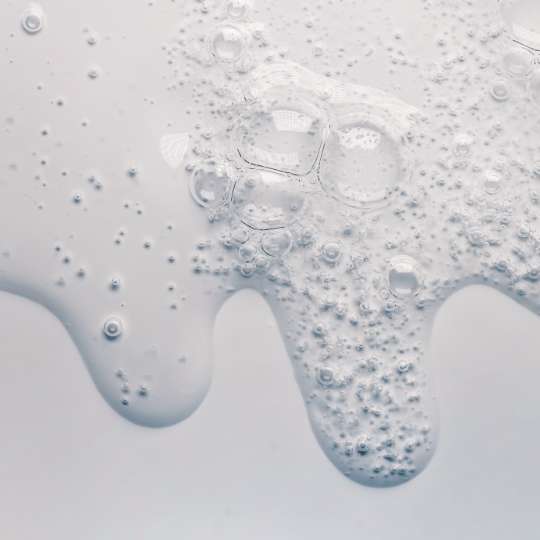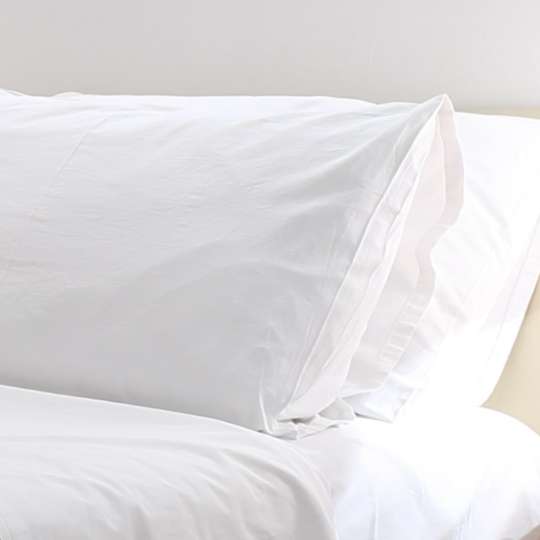

Skincare can be confusing
Ever been in a meeting where you’re nodding your head without having the faintest idea what everyone is talking about? Certain skincare industry terms tend to evoke the same semi-blank expression from many of us. Years ago, skincare felt simple – all you had to do was consider the three basic steps of cleanse, tone and moisturise. Brands were less transparent about their formulations, and education around specific ingredients was reserved for scientists and beauty editors.
Fast forward a few years and the conversation around skincare has been blown wide open. Yet, with greater knowledge comes greater chances of confusion. Suddenly the process of buying a cleanser feels like it requires an hour-long briefing and hardback how-to guide. Not everything is worth knowing either, and some skincare terms are nothing more than marketing jargon that has wiggled its way into the lexicon. So, to help you navigate this exciting but complex landscape, we’ve put together a skincare glossary to explain and define the terms that spark the most confusion. Notebooks at the ready…
Skincare glossary: A-Z
Antioxidant
Antioxidants are vitamins, minerals or other molecules that protect our skin and bodies from free radicals. Free radicals cause oxidative stress, and the antioxidants prevent this from happening, hence their name “antioxidant”. To make the most of their shielding abilities, antioxidants are best used during the day, when our skin is under siege from free radicals from environmental factors like UV rays and pollution. Some of the most popular antioxidants found in skincare include vitamin C, vitamin E, resveratrol, niacinamide and glutathione.
Broad spectrum
When most of us buy a sun cream, it’s the SPF (sun protection factor) we are interested in. This number indicates how much protection you’re getting. The higher the number, the more protection you have, but doesn’t mean you’re shielded from all UV rays. It is UVB rays that cause burning, and SPF ratings don’t take UVA rays, which are responsible for the majority of skin ageing, into account. Broad spectrum means that a sunscreen protects from both UVA and UVB rays.
Clinically tested
For a brand to state that their product has been clinically tested, it should have been tested on humans, in a clinical environment, under the supervision of a medically or scientifically qualified individual. That expert might be a doctor, a scientist or a dermatologist. To claim, for example, that a product is clinically proven to reduce pigmentation, it needs to have undergone this kind of testing.
Cruelty-free
The term cruelty free means that the product and the ingredients used within it have not been tested on animals at any stage of their development. In most cases there are no defined rules on the term and by stating “cruelty free” a brand is saying that they have not personally tested any of their ingredients or their final product on animals. Animal testing is banned in the EU and the UK, so you can rest assured that products sold in these markets will not have been tested on animals.
Dermatologically tested
Contrary to popular belief, the term dermatologically tested does not mean a product has the stamp of approval from a dermatologist. In fact, it is possible that a dermatologist has not been part of the process at all. Dermatologicaly tested actually means that it has been tested on the skin to ensure it is safe for use, under the supervision of someone who is scientifically qualified.
Dermis
The dermis is the second outermost layer of our skin that sits beneath the epidermis. It is not directly visible to us, and is home to the structural elements of the skin such as collagen, elastin and hyaluronic acid. Without these components in place, our skin would not have any bounce, firmness or spring.
Double cleanse
A commonly used skincare term, double cleanse is used to describe a method of cleansing whereby you wash your face twice in the evening. The idea is that the first cleanse will remove any makeup, SPF and daily grime, giving the second cleanse the opportunity to give pores a thorough clear out while removing any residue from the first cleanse. Some experts recommend your first cleanser is oil-based, and the second one water-based, but there’s no reason why you can’t simply use the same product twice.
Emollients
If your skin is feeling dry and rough, you’re going to want some emollients in your routine. These are ingredients that moisturise your skin, helping to keep it soft and smooth. Shea butter, ceramides, squalene and plant oils all sit within the emollient family.
Epidermis
When we look at our skin, it’s the epidermis that we are looking at. It is the very top of our skin, and there are multiple layers and components within it which work to keep the good stuff, like moisture, in, and the bad stuff, like pollution, out. The epidermis is constantly renewing and regenerating itself.
Free radicals
Buckle up, this is where it gets a bit more science-focused. Free radicals are unstable molecules or atoms with one free electron that are looking for a second electron to make a pair. Think of it a little bit like trying to find a second shoe in a chaotic wardrobe. These pesky free radicals steal electrons from healthy cell components, which then causes them to oxidise. Free radicals come from things like UV rays and cigarette smoke, with exposure to them leading to oxidative stress which causes premature wrinkles and uneven skin tone.
Gluten-free
Gluten-free means, as you’d expect, that the product does not contain gluten or gluten byproducts. The term has begun to crop up within beauty marketing messaging in recent years, as an add-on to support “free from” or “clean beauty” agendas. When applied topically, gluten cannot enter the bloodstream, and therefore cosmetic products that contain gluten are safe for anyone who is coeliac or has a food intolerance to gluten.
Humectants
Picture a dried-out sponge on the side of your sink. Without water it will be dry to the touch and crispy in texture. Drop a little water onto it, and it will soak it up greedily, becoming softer and plumper in the process. Humectants work in very much the same way, and are ingredients that draw water into the skin and hold onto it, helping to restore hydration. Hyaluronic acid, glycerin and trehalose are all humectants.
Hypoallergenic
Hypoallergenic cosmetics have been earmarked as less likely to cause an allergic reaction. It is a marketing term, and there is no strict regulation, but industry guidelines do state that the term should only be used when a product has been designed to minimise allergenic potential and tested accordingly. Of course, everyone is different, making it impossible to exclude all risks of reactions, but it is relatively safe to assume that a hypoallergenic product will be nice and gentle. Fragrance and essential oils are common allergens, so you would expect these to be excluded from hypoallergenic products.
Microbiome
If you’re squeamish, scroll away now. The microbiome is a community of microorganisms (including bacteria and fungi) that exist on the skin’s surface. They are your first line of defence, so it pays to keep them happy and harmonious. Things like over-exfoliating and over-cleansing can disrupt this important ecosystem, leading to irritation and inflammation.
Natural
If a product describes itself as natural, it’s fair to assume it is formulated with natural ingredients. However it is not a strictly regulated term in the UK and EU, and doesn’t always mean that the entire formulation is made from natural ingredients. It is also worth keeping in mind that even natural ingredients still need to go through a chemical process in order to be formulated with, and not all natural ingredients are sustainably sourced.
Non-comedogenic
Non-comedogenic means that the product has been designed not to clog pores. It is another marketing term with no strict guidelines, but can be a helpful indication to consumers that this is suitable for oily or blemish-prone skin. Things like butters and oils are common comedogenic culprits, so these products are likely to be free from, or low on, ingredients like these.
Organic
Organic products are products that contain natural ingredients that have been grown on organic farms with no pesticides or artificial fertilisers. Much like many terms of this ilk, it is not strictly regulated in the EU and UK so it is hard to guarantee unless it has been certified externally. The term is much stricter in the US. A product doesn’t tend to need to be 100% organic to call itself organic.
Occlusives
For skin that is compromised and struggles to retain moisture, occlusives are key. They form a protective barrier over the skin in order to seal in moisture. Some may feel heavy in texture, which contributes towards their work as barriers. Occlusive ingredients include lanolin, petroleum and silicones.
Parabens
Parabens are very effective preservatives. They act as antibacterial and antifungal agents to prevent product contamination and help your cosmetics to last longer.
Patented
A patent is the legal right to make or sell an invention, such as a product or ingredient, for a certain number of years. This prevents other companies from using it, and gives the brand who holds the patent the monopoly on this area.
Prebiotics
Prebiotics are food for probiotics, helping to nourish them and boost their activity by creating a nurturing environment for them to thrive in. They can be taken in food or supplement form, as well as applied topically.
Probiotics
Even if you haven’t heard of probiotics in skincare, their prominence in things like natural yoghurt means most of us have a basic understanding of what they are. If you don’t, allow us to bring you up to speed. Simply put, probiotics are good bacteria with health benefits. It is important to have more friendly bacteria than bad in your gut and on the surface of your skin, and probiotics help to re-address the balance.
Skin barrier
Skin barrier has become something of a beauty buzzword in recent years. There is a common misconception that only the very outer layer of our skin forms the skin barrier, when in reality our entire skin functions as a barrier which regulates the interactions between our internal body and the outside world. Among the skin’s lines of defences are layers that work to regulate water loss through mortar-like lipids, immune cells for external protection and friendly microorganisms sitting on the surface.
Silicones
Silicones are synthetic molecules that were developed with the sensorial aspect of cosmetics in mind to make our products smooth, spreadable and silky. You’re most likely to find them in things like makeup primers and hair conditioners.
Sulphates
Love the satisfaction of a cleaning product that foams? That’s the sulphates doing their job. Sulphates are cleansing agents that form a lather in order to remove oils, debris and dirt. They are most commonly found in facial cleansers, body washes, shampoo and toothpastes. Some people can find that sulphates are too harsh for their skin, causing dryness.
UVA
UVA rays are a type of UV ray that comes from the sun. They have a long wavelength which allows them to penetrate deeply into the skin, and they also maintain the same level of strength during daylight hours all year round. Unlike UVB rays, they won’t cause burning, but they are the biggest cause of premature ageing. If you needed a reason to wear a daily SPF even in winter, UVA rays are it.
UVB
As we’ve just alluded to, UVB rays are also a type of ray emitted to by the sun. They are shorter than UVA rays but have higher energy levels. UVB rays are most prominent during the summer months and the number one cause of sunburn. Ouch.
Vegan
The term vegan means exactly the same in a cosmetic context as it does in a culinary one. Vegan products contain no animal derived ingredients.
Read, watch and be inspired...



